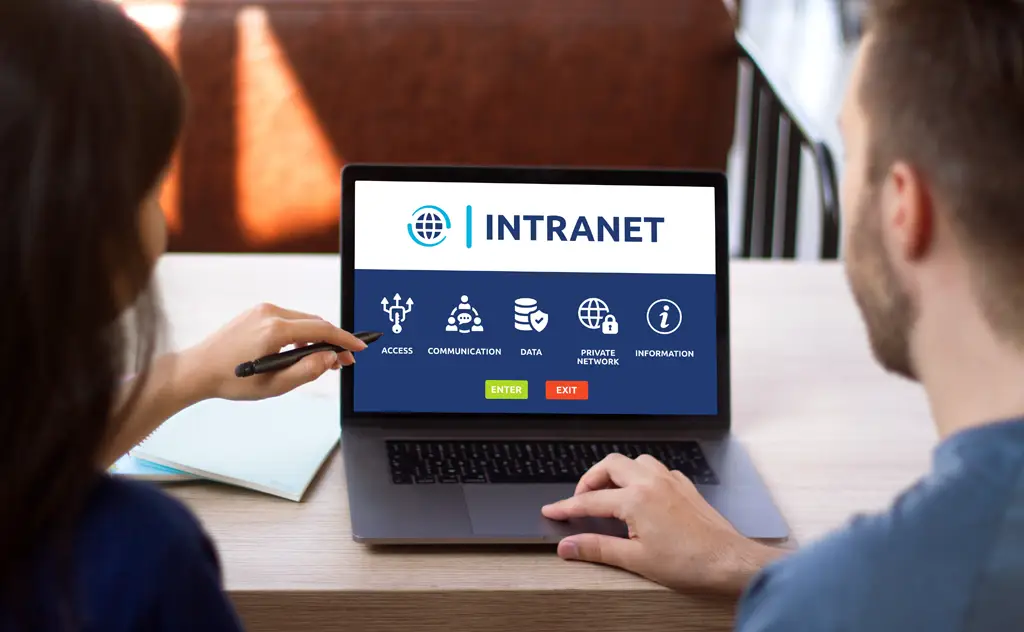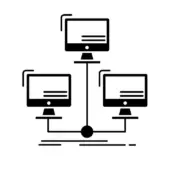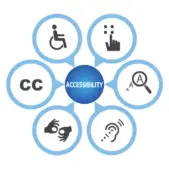With high customer expectations and a fast-paced business environment, a well-designed and user-friendly intranet is essential for efficient business processes. However, many organizations struggle to create an intranet that meets the needs of their employees and drives meaningful engagement. This internal communication hub is the central nervous system of your organization, housing everything from sales scripts to customer data. If employees struggle to navigate and locate the information they need, the intranet loses much of its strategic value.
Optimizing intranet usability should be a top priority for the C-suite. This article outlines the essential building blocks of a successful intranet. By focusing on these key elements, you can develop an intranet that empowers employees, streamlines workflows, and ultimately boosts productivity and morale.

Essential Intranet Building Blocks
Intranet usability guidelines can vary significantly across companies and industries, as each organization faces unique challenges and operational procedures. However, there are some fundamental principles that all organizations should consider when building a new intranet or revamping an existing one:
1. Intuitive Search Functions
Ineffective, counterintuitive search functionality is among the most common pitfalls of intranet usability. Consider the following: an inexperienced customer service representative receives a request they have never encountered before. To resolve the situation quickly and satisfactorily, the agent must be able to find the company’s guidelines for such a request inside the intranet in seconds. If they cannot locate that information easily, the call can spiral out of control quickly.
When employees struggle to find the documents, policies, or subject matter expertise they require, they waste time, frustrate, and make potentially costly mistakes. A robust, intuitive search engine is essential for empowering your workforce and maximizing the value of your intranet.
Key benefits of intuitive intranet search include:
- Increased productivity. Employees can quickly find the information they need to do their jobs effectively, without getting bogged down in a frustrating search process.
- Improved decision-making. With easy access to relevant data and subject matter expertise, employees can make more informed, timely decisions.
- Enhanced collaboration. When employees can easily discover relevant content and connect with subject matter experts, it facilitates cross-functional cooperation and knowledge-sharing.
- Reduced support costs. A user-friendly search function minimizes the need for IT or HR support to help employees locate critical information.
2. Robust User Profiles
In large companies, detailed employee profiles help managers quickly identify and connect with subject matter experts for specific projects. They also simplify and streamline HR tasks. Additionally, new hires can use these profiles to learn key stakeholders’ names, titles, and responsibilities. To maximize the value of your intranet, encourage employees to complete their user profiles fully.

3. Intuitive and User-Friendly Design
Intuitive and user-friendly intranet design is critical for driving employee engagement and productivity. When the intranet is easy to navigate, with a clear information architecture and intuitive workflows, employees can quickly find the necessary resources and information. This reduces frustration, saves time, and enables workers to focus on their core responsibilities rather than struggling with a confusing or counterintuitive interface.
An intuitive intranet design also encourages broader adoption and usage, ensuring the platform becomes an indispensable tool for the entire organization. By prioritizing UX and design, you can transform your company intranet from a neglected internal system into a strategic asset that empowers your workforce and supports broader business objectives.
4. Collaboration Capabilities
A collaborative intranet fosters knowledge-sharing and cross-functional teamwork by enabling employees to easily share information, work together on projects and connect with subject matter experts. This can lead to faster problem-solving, more innovative ideas, and better alignment across your organization. Features like document co-authoring, instant messaging, and employee directories empower employees to collaborate in real time, breaking down silos and improving productivity.
Unlocking the Power of Intranet Usability for Business Success
One critical yet often overlooked component of employee enablement is the usability of your company intranet. A well-designed, intuitive intranet empowers your workforce, streamlining internal processes and driving greater efficiency. Conversely, a confusing, outdated intranet can lead to frustrated employees, lost productivity, and missed opportunities.
Investing strategically in your intranet can deliver tangible benefits to the bottom line. At UpTop, we have experience with enterprise-level intranet design and development projects. We’ll help you identify exactly which features and functionality your intranet needs to maximize employee engagement, productivity, and ROI. Let’s chat to discuss the unique needs of your internal communication system and how we can help you create an intranet that supports your business objectives.


